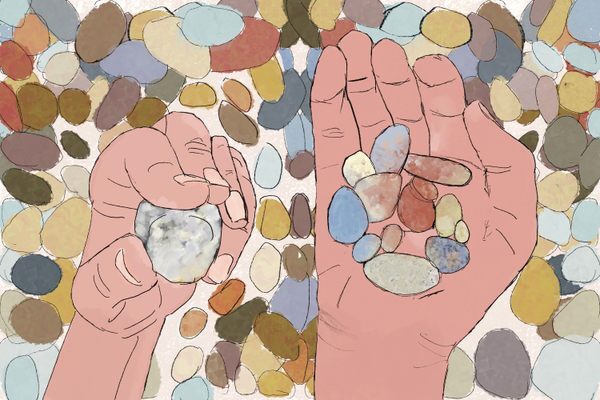How to Identify Rocks and Learn Their Backstory
Is your rock a single mineral or a rock type?
A rock can be a single mineral or made up of many minerals, and can be one igneous, sedimentary or metamorphic.
If your rock is a single mineral, it may be an obvious crystal or look more worn and rounded. For example, when a quartz crystal is weathered, it turns into a milky to clear rounded crystal.
Rock types are usually composed of multiple minerals and don’t appear as a single crystal.
If you see a lot of larger crystals, your rock is likely igneous, where large crystals formed in volcanic bodies slowly cooling underground.
If you see a lot of small crystals then it is likely from a volcanic body, nearer the surface, that cooled faster.
If the crystals in the rock seem deformed, or they’re small and red (garnets), then your rock is likely metamorphic, which means it formed but then was melted again at some point in the deep past.
Is your rock light or heavy?
Most rocks you may pick up will feel neither light nor heavy for their size, because the typical rock you’ll come across is mostly quartz and your brain has learned to categorize its density as “average.”
However, if your rock feels heavy for its size, then it contains denser elements such as iron, lead, manganese, and others further down on the periodic table. This tells you your rock is likely from some place deeper inside the planet, where denser elements are found, and made its way up to Earth’s surface through plate tectonics or other massive geologic processes.
If your rock is heavy and also feels like metal, it could be a pure chunk of a metallic mineral such as pyrite, silver, or even gold.
A rock that feels light will be made from less dense elements such as carbon, sodium, beryllium, calcium, and others. This suggests your rock was formed closer to the surface or even on the surface. Rocks that feel light because they are full of holes may be volcanic—the holes can indicate where gasses were trapped.


